This fall I harvested some dried mullein stalks to coat with flammables and attempt to use as torches. I read in several "articles" online that mullein torches were used by the Romans. Why the quotes? Because not a one of those actually cite a viable source for that information. I do not know whether it is legit or not (Roman period is not my research thing), but folklore also refers to these as "witch candles" so I thought I would give it a test regardless. I will note that in On Simples, attributed to Dioscorides there is a reference to Mullein being used as lamp wicks and it is also called "lampwick", so that I will definitely be checking out in the future as well.
So last month I coated some of the stalks with wax. Because of the cost of beeswax and my desire not to waste any, I chose not to fill a tall vessel and dip the stalks. Rather, I melted a small portion and dipped the tip and just ladled the liquid wax over the rest and watched it soak in to the very dry material. Modernly you can find mullein candles from neopagan vendors who very heavily coat them, truly making them candle-like in appearance. They sell them as a less appropriative replacement for white sage for smudging (not a bad thing at all).
So last month I coated some of the stalks with wax. Because of the cost of beeswax and my desire not to waste any, I chose not to fill a tall vessel and dip the stalks. Rather, I melted a small portion and dipped the tip and just ladled the liquid wax over the rest and watched it soak in to the very dry material. Modernly you can find mullein candles from neopagan vendors who very heavily coat them, truly making them candle-like in appearance. They sell them as a less appropriative replacement for white sage for smudging (not a bad thing at all).
The initial test had a 3 inch flower head that gave me 5.5 minutes of well-lit burn time. I used approximately 1.75 ounces of wax to coat the 4 stalks I had (3-4ish inches).
Because wax likely had better uses than a quick burning torch in period, I decided to look at other viable options for this process and purchased some beef tallow and used up some expired olive oil and also vegetable (soybean) oil that was left over from frying schnitzel.
For this round I used 4 inch plants, all dressed in the same fashion (with the tip held in the oil and oil ladled down the stalk until it was well coated). I labeled them and stood them up as I did before, lit the tops and timed them.
While the lengths of the flower heads on these were all similar, they were not exact down to the millimeter and I had no way to check for density, so some might have been heavier than others. So this truly is not scientific, but still gave me a feel for how well the different fats performed.
In the image below, the wax is on the left, tallow, then olive oil and the vegetable oil on the far right. The wax caught most readily and produced the most light for the duration of it's burn. It is the only one that really acted as a "torch" for the entire duration.
The tallow performed well, but the bright light it started with settled down to something a bit better than a really good candle. The two plant oils were more candle like until the last 5 minutes of their burn time.
Because wax likely had better uses than a quick burning torch in period, I decided to look at other viable options for this process and purchased some beef tallow and used up some expired olive oil and also vegetable (soybean) oil that was left over from frying schnitzel.
For this round I used 4 inch plants, all dressed in the same fashion (with the tip held in the oil and oil ladled down the stalk until it was well coated). I labeled them and stood them up as I did before, lit the tops and timed them.
While the lengths of the flower heads on these were all similar, they were not exact down to the millimeter and I had no way to check for density, so some might have been heavier than others. So this truly is not scientific, but still gave me a feel for how well the different fats performed.
In the image below, the wax is on the left, tallow, then olive oil and the vegetable oil on the far right. The wax caught most readily and produced the most light for the duration of it's burn. It is the only one that really acted as a "torch" for the entire duration.
The tallow performed well, but the bright light it started with settled down to something a bit better than a really good candle. The two plant oils were more candle like until the last 5 minutes of their burn time.
At the end of ithe beeswax burned brightly for 18:42 (18 minutes, 42 seconds). The tallow burned for 27:26 and the vegetable oil burned for 25:38. The olive oil was burned for 21:01, but I also had to relight it at one point because it was very much struggling to really get going.
Also, I had a helper, because of course I did. He feels that I finally have set the appropriate alter for his divine presence.
Also, I had a helper, because of course I did. He feels that I finally have set the appropriate alter for his divine presence.
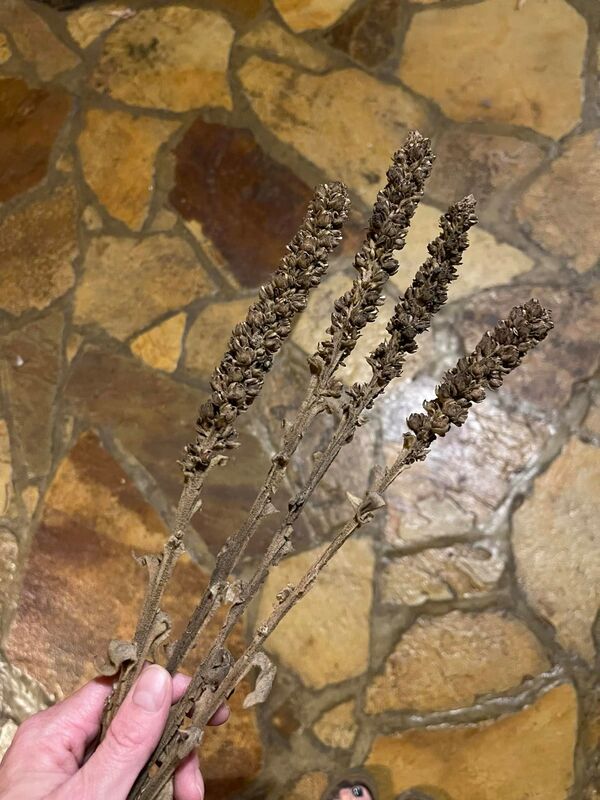
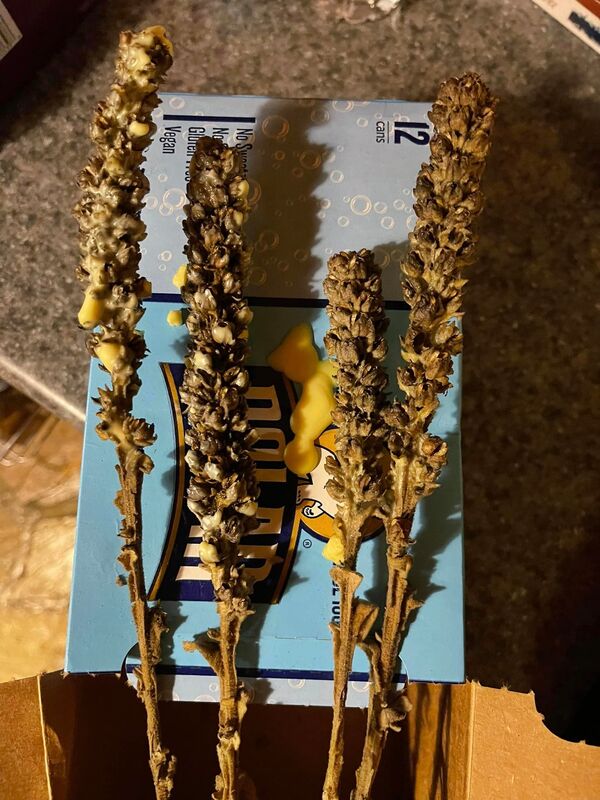
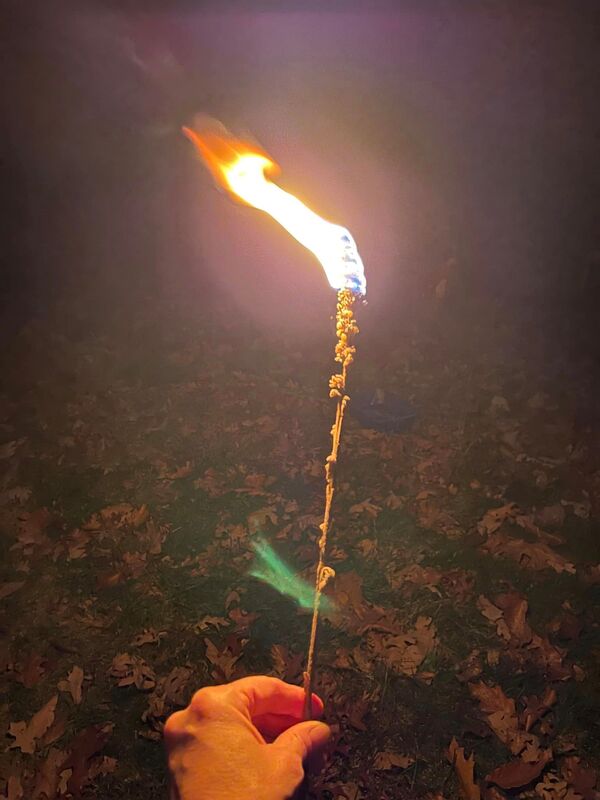
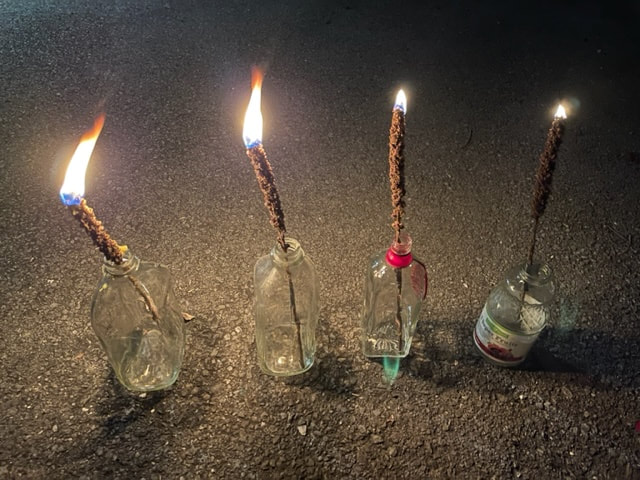
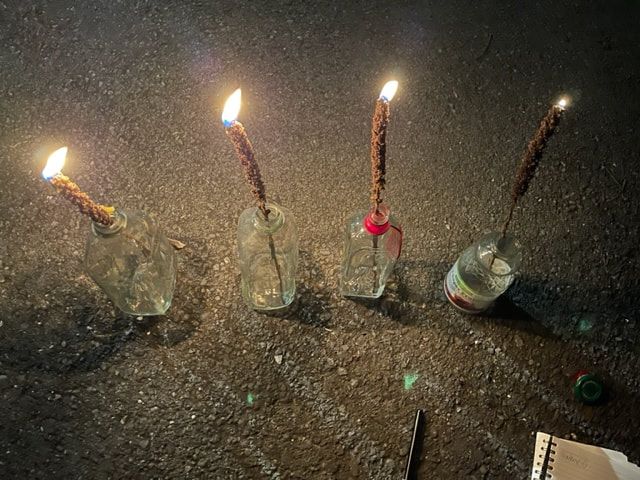
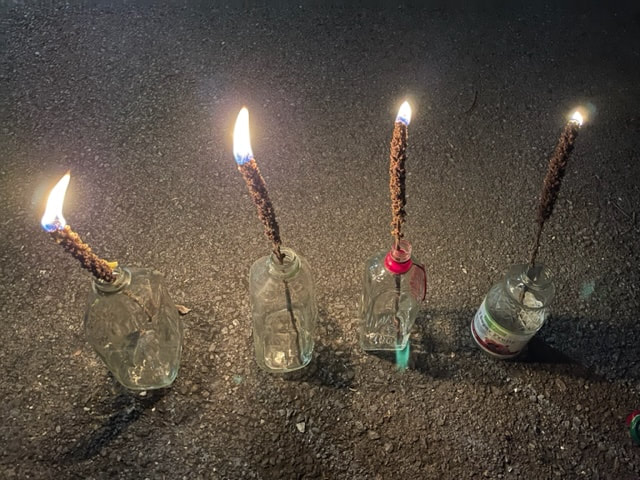
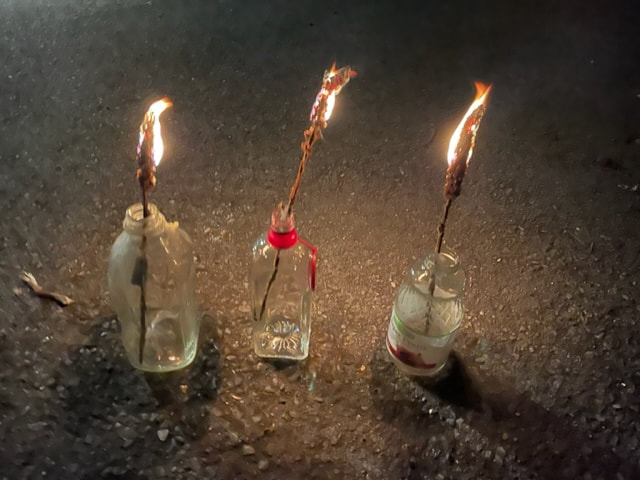
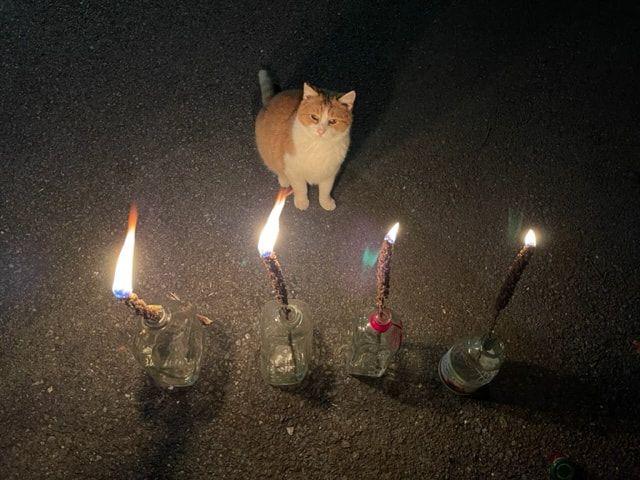
 RSS Feed
RSS Feed